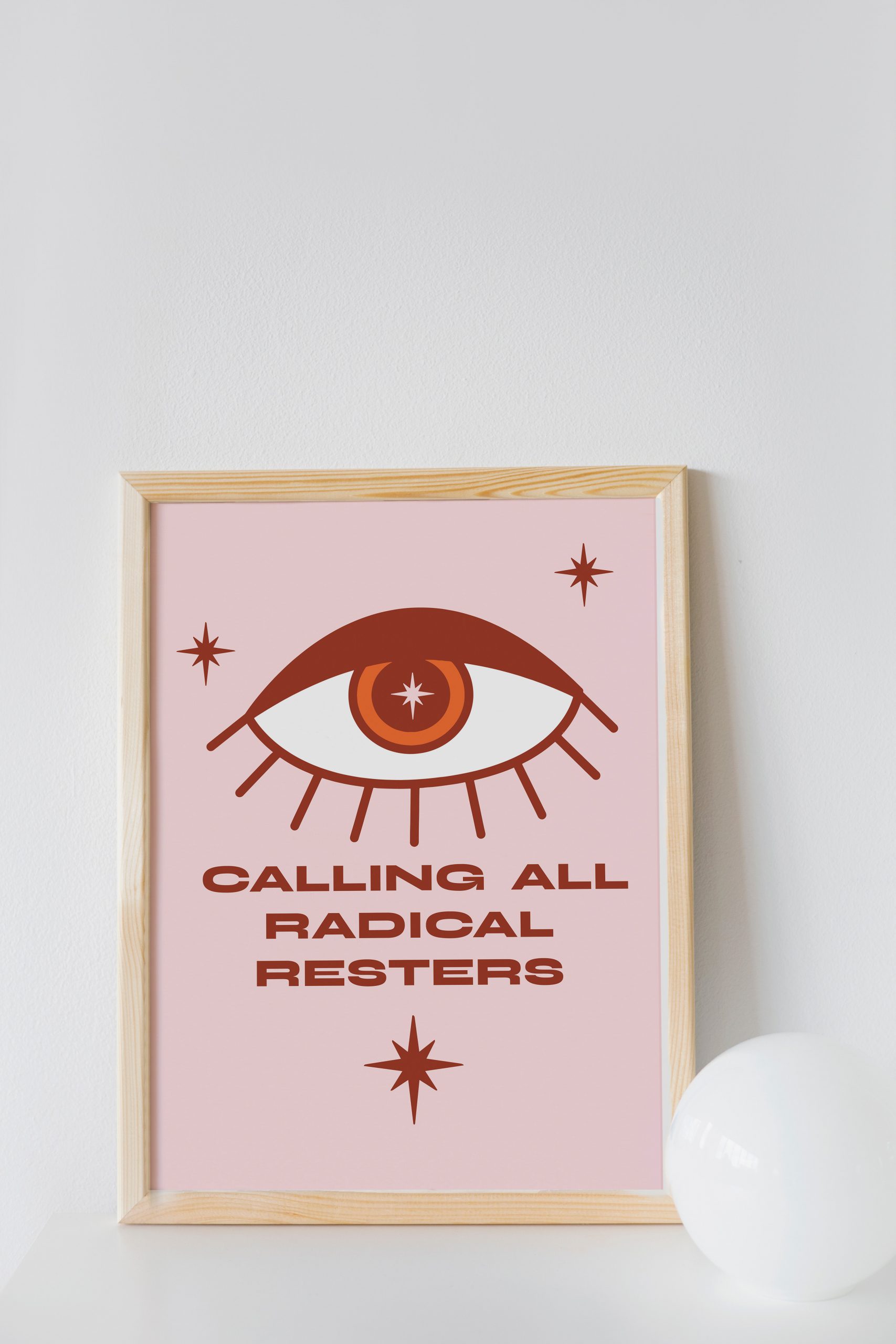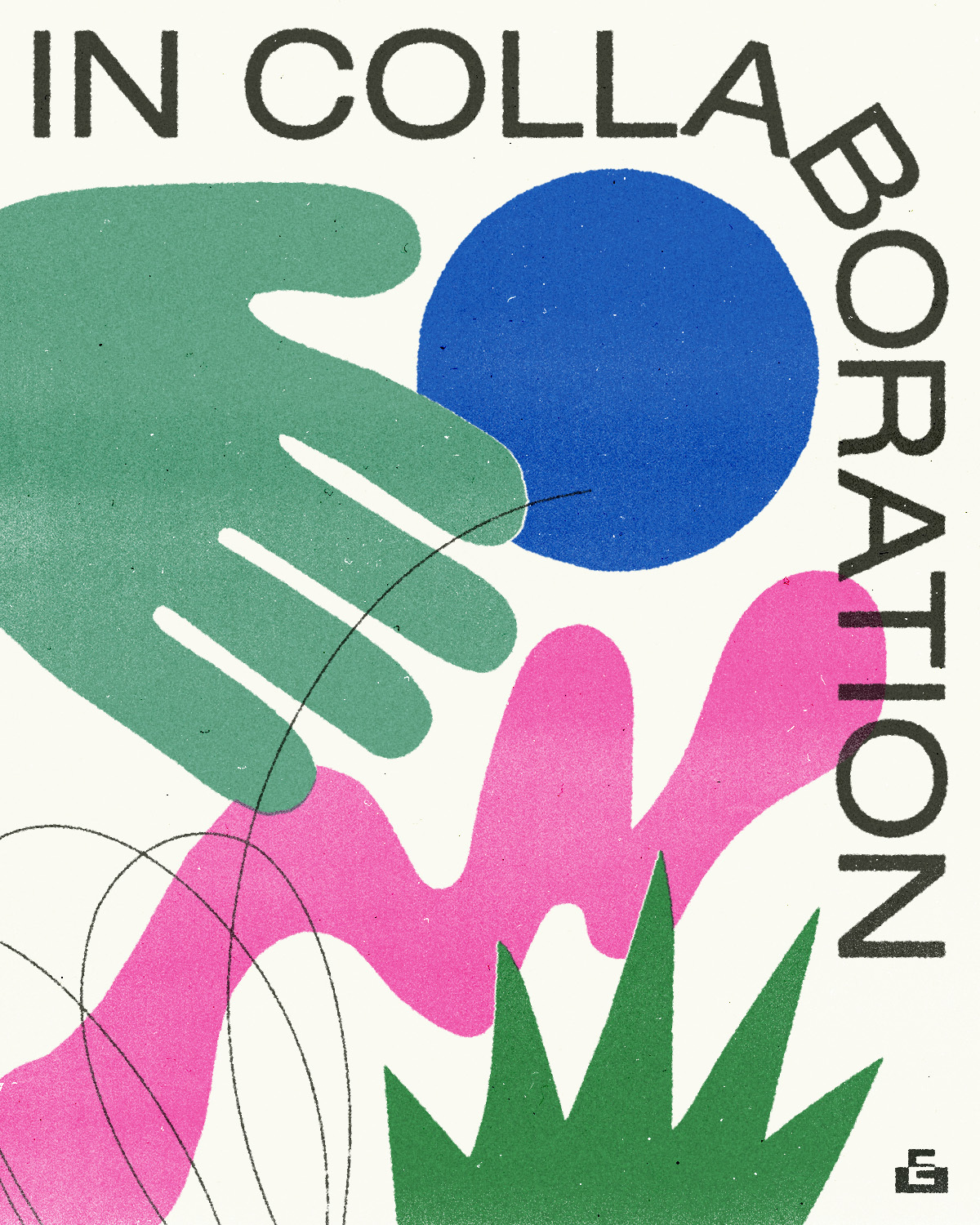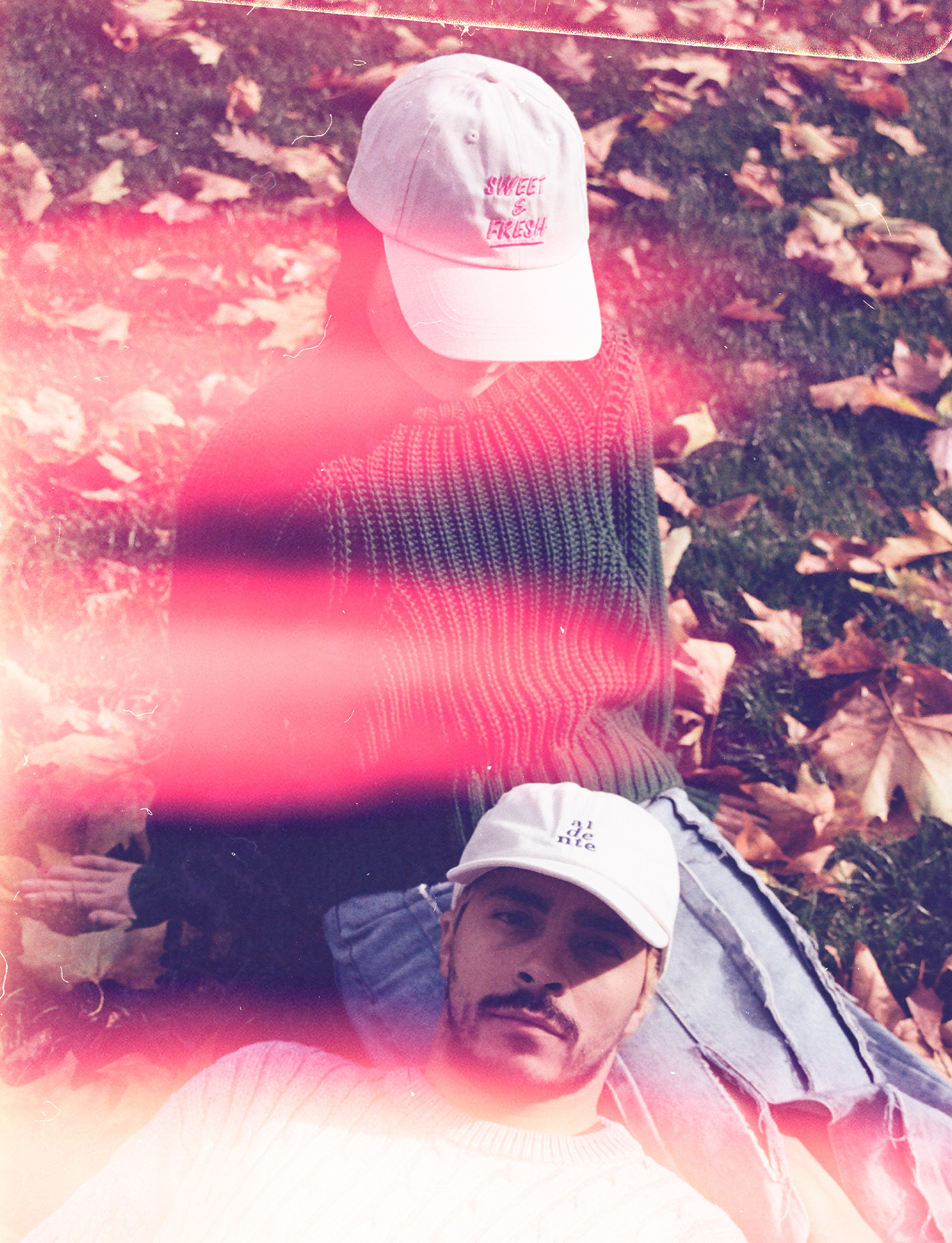In your own words, your work “explores the intersection of content and caregiving with an emphasis on redesigning ableist visual culture.” What was your route to this? Has your work as an artist always been linked to advocacy?
I think that growing up in a space and not necessarily always feeling understood really shaped me, because being seen and being valued is different from feeling that you’re actually understood as a person. ADHD always looks different, every neurodivergent person is unique, so there’s no structured or traditional way to look at someone who has a disability. That means that oftentimes, disability is viewed in a very negative ableist way that’s very much rooted in a charity model; something that needs to be fixed or cured, not necessarily an identity.
It can be very flattening?
Exactly. When I started to feel comfortable identifying as someone who has a disability and is neurodivergent, who also parents someone who is neurodivergent, I started to realise that design can begin to be used in a very celebratory, uplifting way. To me, that’s the whole point of design and art, to help you feel that you have a collective responsibility, and to help people feel valued, understood and seen. So I feel that my work naturally became rooted in advocacy, as a result of not necessarily feeling that I was seen.
That’s something that you will often hear from Black, disabled people; they feel very demonised, they’re demoralised. They’re often viewed as a threat, they’re viewed as the enemy. Often we see disabled people in the media, and they’re othered, they’re not necessarily celebrated. It’s gotten a bit better in terms of disabled people adding their own perspectives to the stories they’re creating, and I feel that’s what helps the work become celebratory. You bring joy to the conversation when you strip away all the voices that are expecting disability to look a certain way. But it really needs disabled people to be encouraged to take up those positions of leadership, especially in design, to really say what they want to say.
My work naturally became rooted in advocacy

A big part of your work is advocating for access and inclusion, but there’s a lot of joy in it too. Is this something that’s conscious?
Yes, that’s very intentional, especially since my son, who is ten years old, was diagnosed as autistic. Instantly, we were told: this is what you have to do to make sure that you can ‘normalise’ him, or to make sure that he’s a productive asset to society and that he can function properly and he can comply and adapt to the world around him. Never is the conversation rooted in: how can the world adapt to him?
I ended up learning, and I’m still learning so much, from his eccentricities and his joy, and I want to be able to reciprocate that, so that he knows that his way of existing and his identity is celebrated completely. I don’t want for him to exist in a world where he feels like he has to be different or change for anyone. Reading a lot of these really horrible stories of autistic kids, Black autistic kids, being bullied, and feeling that they’re less than and that they’re of no value, it’s hard. Not only are we teaching him to advocate for himself, but we are having a lot of conversations through the artwork that we create as a family, genuine conversations about what our lives are like, what our stories are, and what we can contribute to the world.
It sounds like your practice has almost expanded to include your son. How do you find balancing the responsibilities of motherhood with your life as an artist?
We’re taught that as mothers and caregivers the work shouldn’t be personal or too internalised, that you have to speak to a universal audience. But I think of all the other disabled mothers and caregivers who are out there and who want to feel they’re being looked after, they want to feel that they’re part of a collective community that’s rooted in care and justice, and they want to see design that really reflects who they are. I felt very uncomfortable trying to separate my work from motherhood, because I knew that they were one and the same for me.
Also, Black maternal health is a very huge deal. The ratio of Black mothers who are overworked and objectified within society, and unless we have a certain amount of degrees or accolades, we’re not always respected, just for the work that we continue to put into our homes, our communities, when in essence caregivers provide so much of what everyone needs to survive.

I know your campaign was inspired by Tricia Hersey’s recent book Rest is Resistance. For you, what was so interesting about the book?
Tricia Hersey has the ability to be completely unapologetic when it comes to prioritising the message of rest. Not necessarily rest in a traditional sense of, “Let’s just sleep for the rest of our lives.” But thinking how, culturally, Black people were robbed of the opportunity to rest, thinking about how we still are to an extent viewed as these bodies that are meant to produce. I mean we were enslaved, we were engineered, we were auctioned off and expected to work for other people and not for ourselves or our own happiness.
It’s about designing together
I feel that it’s always so encouraging to see an author remind us that so much of what Black people have been robbed of was by design, and to remind us that now we have this opportunity to continue to uplift, and to treat rest as a radical act, and as resistance. It’s important to reclaim our power to take back what’s been stolen from us, and continues to be stolen from us.
If we’re talking about changing a disabled person so they’re ‘non-disabled’, that is eugenics. It’s not necessarily celebrating a disabled person for what they can create. It’s, “Anyone who is slow or who can’t design in a way that keeps up with ‘societal norms’, they’re expendable, let’s just erase them.”
One of the aims of your practice is to “redesign ableist visual culture”. Can you talk a little about how visual culture needs to change to become more inclusive?
It’s more than just including disabled people in the conversation, it’s letting them actually lead the conversation. It’s about designing together, alongside each other, and not feeling, “As a disabled person, I need someone to design for me.” So I feel that’s the type of language we need to uphold, and that we need to keep holding corporate institutions accountable. It doesn’t just end with having someone sit at the table, it’s about providing the supplies for us so we can build our own tables, and our own systems that celebrate who we are as disabled people.
Read More: Najla Said Is Providing Representation






